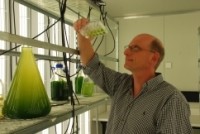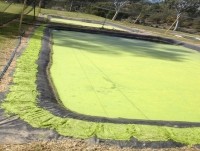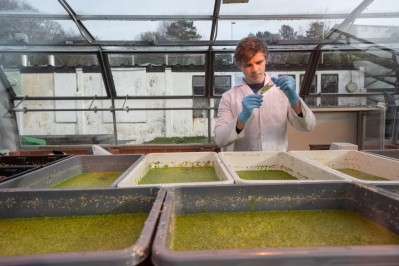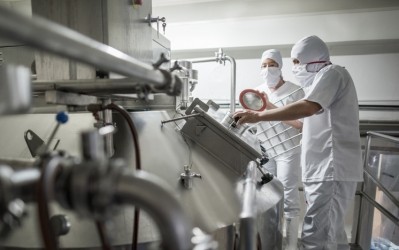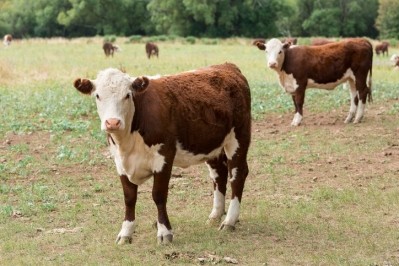DIY protein? Duckweed and microalgae trialed on Australian cattle farms
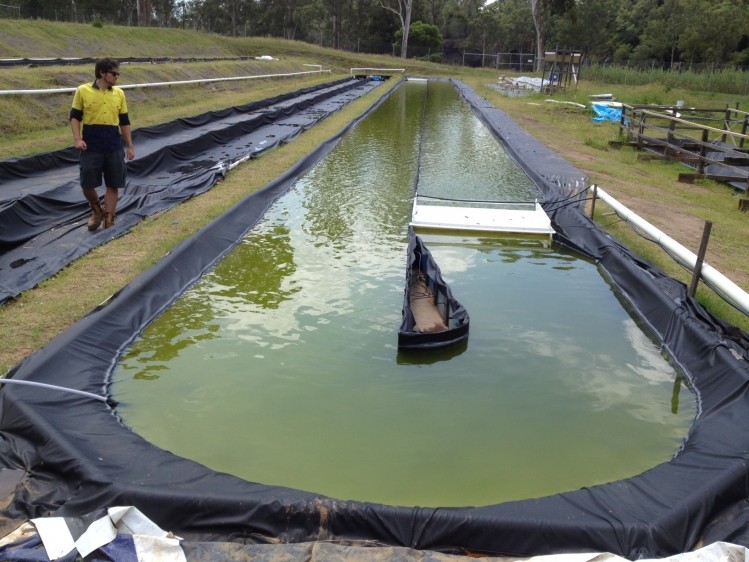
The protein-rich aquatic plants can be used to supplement cattle diets in the dry season – improving weight gain and reducing greenhouse gas emissions.
The University of Queensland’s Algae Biotechnology Lab, led by professor Peer Schenk, started working with farmers following a three-year research project funded by Meat and Livestock Australia.
Speaking to FeedNavigator, Schenk said: “At the end of the project, we basically had lab-scale production of microalgae and lemna or ‘duckweed’, and we had done a food technology economic analysis to find out how much it cost to produce. We had also produced new technology to reduce the cost at every step. Now the project is at the stage where we’re just applying it all at different farms.”
On-the-ground customization
Schenk said the team was working with three cattle farms across Australia to implement ponds on-site and work through the logistics of harvesting and drying.
“The farmers are going to grow the aquatic plants themselves – that was the aim of the project because it allows them to get a protein feed supplement independent of price fluctuations. It’s also particularly interesting for farmers who might be quite remote because they don’t have to worry about freight charges.”
He said farmers could produce almost 100 tons of dry microalgae per hectare and around 30 tons of dried duckweed per hectare - more productive than growing soybean in terms of end protein content.
“…What’s interesting is that different farms have different systems on how they work with their animals – so we have to do a customized approach,” he said.
Some farms, for example, had very controlled herding strategies to move cattle from water holes to grazing areas at certain times of the day, whereas others allowed their cattle to roam freely.
Under the lens…
While research into growing microalgae was fairly strong, Schenk said less was known about duckweed and many positive surprises had surfaced while researching the floating aquatic plant.
“It’s very interesting to harvest because you just scoop it off the top or the animals can eat it directly while drinking, so you’re saving on some of the harvesting costs as well,” he explained.
Asked how farmers could control intake if cattle were allowed to self-feed, he said it was possible to add a bitter component to the plant to prevent over-eating, but that it was adequate to simply manage the amount of duckweed in water holes on a weekly basis.
From a production standpoint, Schenk said the duckweed was particularly interesting as it had the ability to reduce evaporation caused by heat, something extremely appealing during the dry season.
The plant, he said, could also be ‘fed’ with cow manure. “If you don’t overdo it; do it in the right dose and supplement it with minerals, especially iron, we worked out how you can get optimal supply with lemna. The whole thing has really taken off because we’ve been able to work out what the nutrient requirements of lemna are.”
For microalgae production, Schenk’s research had proven that farmers could grow it all year round.
“That was another nice surprise,” he said. “We knew we would be battling with the elements and weather and we were worried it would impact the algae production a lot, but it turns out not.”
However, he said production costs were higher than duckweed because of the need for Co2 to gain higher yields.
“Getting Co2 in bottles is almost half of the production cost and we didn’t realize this until later on in the project…. So, if people would like to grow algae, it’s a good idea to have some sort of Co2 source close to them because it could halve the cost. For example, if they have a generator on-site for electricity, the emissions from it can be used with a filter.”
Starting something big?
Schenk said the work with cattle farmers on producing alternative proteins was exciting because it was the start of a much bigger personal project.
“There’s a big challenge for everybody in agriculture to increase food production by 2050 by 70%. And that is using existing arable land. If you think about it, half of the current arable land is used for feed, so you can imagine the question – do I feed my animals or feed myself?”
He said the future would see more of the world’s arable land used for human consumption, creating a price rise in feed and a need for alternatives that don’t rely on arable land.
“Algae therefore will be important in the future. I’m hoping to set the direction towards the development of animal feed and protein on non-arable land. It’s a stepping stone for the whole picture on how we can increase food security.”
